October 10, 2015
Visit to the Mullard Radio Astronomy Observatory
Report by: Clive Inglis
On the 10th October 2015, around 20 members of the society enjoyed a tour of the Mullard Radio Observatory at Lord’s Bridge, near Barton, a short distance to the west of Cambridge. Our guide for the tour was Peter Doherty, a member of observatory staff. Peter began by outlining the fascinating and at times secretive history of the site. The talk was given in a lecture room in a building that was originally a station on the Cambridge to Bedford railway line. This line was closed in 1968 and, running almost precisely east-west, later provided a convenient track-way for the Ryle 5Km Radio Telescope.
Peter described how, before the arrival of radio observatory in 1957, the site had been used as a forward ammunition depot by the RAF storing high explosives and incendiary bombs. In 1944 the site became a forward filling depot for the storage and filling of bombs with mustard gas. The remains of the two large vats used to store the mustard gas still exist in a remote corner of the site.
After closure in 1957 the ammunition depot was sold to Cambridge University where the Cavendish Laboratory established the Mullard Radio Astronomy Observatory (MRAO). This was sponsored by Mullard Ltd. and supported at that time by the Particle Physics & Astronomy Research Council.
The observatory is spread over a relatively large area, so it was convenient to drive from one point of interest to another. Our first visit was to the site of the eight 13m dish antennas originally known known as the 5-km Array and latterly as the Ryle Telescope. Built in 1971, these antennas formed an eight-element interferometer operating at a frequency of 15GHz. Four aerials were mounted on the disused, almost east-west Cambridge to Bedford railway line. This allowed them to be moved in position to adjust the telescope’s baseline, the other dish antennas were fixed at 1.2km intervals.
In 2006 these antennas were clustered together to form the Arcminute Microkelvin Imager Large Array (AMI LA) giving an angular resolution of approximately 30 arcseconds, working frequencies between 12 and 18GHz. They are used in conjunction with the AMI Small Array (AMI SA) to study the Cosmic Microwave Background (CMB).
Then it was back in the cars to visit the AMI SA. The AMI SA was constructed in 2004 and consists of ten 3.7m diameter antennas similar in design to those of the AMI L A, positioned within an aluminium walled enclosure and arranged in a group between 5 and 20m apart. AMI SA has an angular resolution of approximately 3 arcminutes working between 12 and 18GHz, and is used to search for and image previously unknown galaxy clusters, supernova remnants and, in conjunction with the AMI LA, to study the CMB.
We then took a short walk to examine a group of prototype low frequency antennas designed and constructed at the Cavendish Laboratory and being tested for use in the Square Kilometre Array (SKA) radio telescope that will be built at two sites in the southern hemisphere, one in Australia, the second in South Africa. On the way to these antennas we stopped to look at structures which housed the five mirrors of the Cambridge Optical Aperture Synthesis Telescope (COAST) and the bunker contacting its optical processing hardware. COAST uses aperture synthesis over a baselength of up to 70m to obtain an angular resolution as high as one thousandth of an arcsecond, twenty times better than the Hubble Space Telescope (HST). COAST was the first optical long-baseline interferometer to obtain high-resolution images of the surfaces of stars other than our Sun.
Also located on the Lord’s Bridge site but not operated by the MRO is a 37m dish antenna that functions as part of the e-Merlin array of telescopes. This array comprises seven radio telescopes each sited at a different location across England and controlled from the Jodrell Bank Radio Observatory in Cheshire. The longest baselength achievable with this array is 217km and when operating at a frequency of 5GHz MERLIN has a resolution comparable to that of the HST.
Our next stop was the control room of the One Mile and Half-Mile Telescopes. The One Mile telescope was completed in 1964 and originally comprised three 18m diameter dish antennas. Two of the antennas were fixed and the third could be moved along a half mile track-way also used by the two dishes of the Half-Mile Telescope . The One Mile telescope was the first to use Earth-rotation aperture synthesis to create radio maps with a resolution better than that of the human eye and contributed to Professor Martin Ryle and Professor Antony Hewish receiving the Nobel Prize for Physics in 1974, the first time that the Nobel Prize had been awarded for astronomical research. As the telescopes are now decommissioned, Peter kindly unlocked the control room and allowed the group to examine the two telescopes’ control and signal recording equipment.
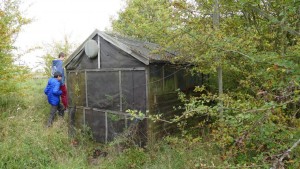
The decommissioned ‘Control Room’ or shed from where Jocelyn Bell Burnell discovered Pulsars in 1967
Another short walk led us to a gap in a hedge passing through which we entered a field, the site of the Interplanetary Scintillation Array (IPS). Built in 1967, in its final form this array covered nine acres and consisted of 4096 dipoles operating as a phased array at a frequency of 81.5MHz. It was designed to measure the high frequency fluctuations of radio sources and specifically the solar wind. Using this array Jocelyn Bell made the first detection of a pulsar in 1967. When entering the field we passed a small overgrown hut. This hut housed the receiving and recording equipment used in this historic discovery and braver members of the visiting group, who fought their way into the hut, were rewarded to find some original equipment still in situ. The array itself is sadly disappearing into the undergrowth.
Walking further on we reached a control room for the historic 4C telescope, the first telescope to be built at Lord’s Bridge in 1957. This array is 450m long, 20m wide, with a second moveable element now mostly removed. The 4C operated at 178MHz, and located nearly 5000 radio sources that were published in the 4th Cambridge radio-sky survey in 1965 and 1966. The telescope is now decommissioned.
It was then on to the site of the Cosmic Anisotropy Telescope (CAT). All that remains of this telescope is the large aluminium sided “bowl” into which CAT was installed. CAT was a 3 element interferometer carrying out observations of the CMB at 13 to 17GHz to and was the first instrument to measure the small scale structure of the CMB.
Close to the CAT “bowl”, Peter showed us one of the latest antenna arrays being developed at the Cavendish Laboratory. Each antenna of this array appeared to be a scaled down version of the low frequency antenna being developed for the SKA. He said the array was designed to work at a range of frequencies around the 1.4GHz Hydrogen Line and, when coupled with the latest signal processing techniques, will have a sensitivity in excess of the large dish antennas at the observatory.
Our final stop on the tour was the impressive control building for Ryle Telescope. Entering the control room it appeared to be exactly as it was when the 5km telescope was in use in the 1970’s and the members of the society took a great interest in the telescope’s control equipment and the odds and ends leftover from the day to day operation of the telescope in the 70’s .
The tour originally planned to take around two hours, finally ended after three and a half. Many thanks to Peter Doherty for giving up his own time to host this visit and providing the visiting Flamsteed members with such an interesting, educational and at times amusing tour of the Mullard Radio Observatory.
Pictures from the trip (by Chris Sutcliffe, Clive Inglis, Malcolm Porter and Mike Meynell):
Posted under: Flamsteed, Meeting Report, Radio Astronomy, Society Trip
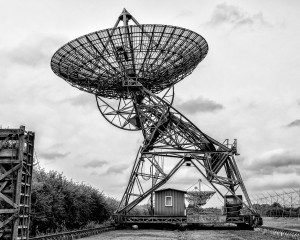
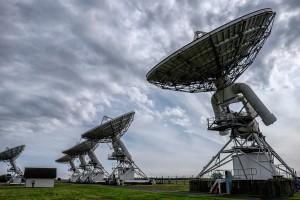
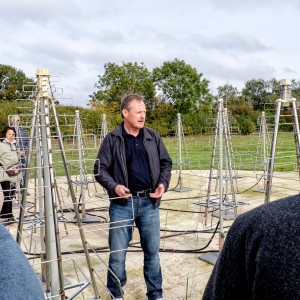
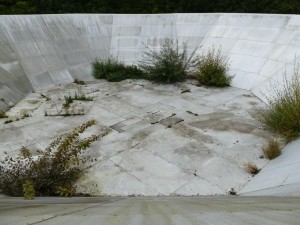































You must be logged in to post a comment.